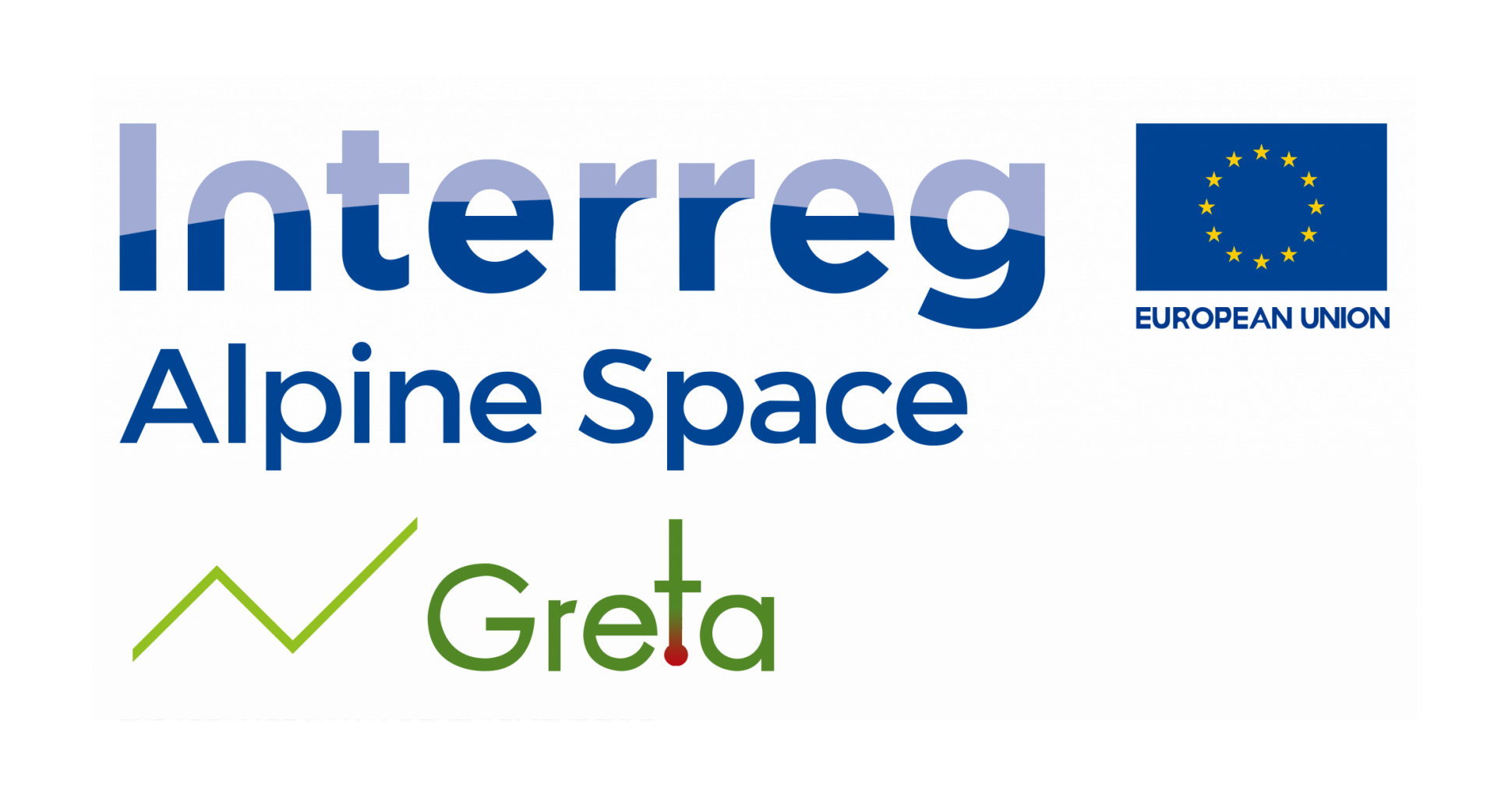
GRETA
Near Surface Geothermal Resources in the Territory of the Alpine Space
Economic and Financial simulation tool
The Alpine region is facing an increasing heating and cooling need, due to the expansion of sectors such as tourism. The reduction in CO2 emissions and energy self-reliance play a key role in this area and can be fostered through the implementation of low carbon and renewable technologies. Among them, Near Surface Geothermal Energy (NSGE) systems and underground heat storage have been analyzed in GRETA project.
NSGE is one of the most abundant reliable renewable thermal energy sources, widespread and available in remote mountain areas, needing no transport of energy products and having no direct emissions to air and, of course, it is a diffused resource across national borders. Although this, the regulations, best-practice knowledge and the integration of NSGE in energy plans show huge deviations, and the policy instruments at different administrative levels have rarely considered these systems.
The knowledge gap about NSGE and the strong differences in country-specific regulations and practices have so far hampered the implementation of NSGE in policy instruments and limited its diffusion across the Alpine Space. These issues affect the substitution of fossil fuels with NSGE and make it necessary to develop harmonized cross-border strategies, policies and common energy planning procedures and tools to foster the implementation of this low carbon system in the Alps.
The proposed web tool implements the same methodology applied within the GRETA project for the spatial financial and economic evaluation of NSGE potential. In particular, in the GRETA project, the same method has been replicated for the whole building stock of the selected pilot areas whereas in the proposed web-tool the proposed method is presented for a single building typology (i.e. detached house; office; hotel).
It is worth noting that the methodology behind the proposed web-tool is only referred to closed-loop systems and relies on an elevated number of working hypothesis. A complete description can be found in:
- Project Deliverable D.3.2.1 “Catalogue of operational criteria and constraints for
shallow geothermal systems in the Alpine environment” with regard to:
- The load profile (thermal signatures) of the three building typology - Section 3.2: Demand side (design operational criteria).
- Project Deliverable D.5.1.1 “A spatially explicit assessment of the economic and
financial feasibility of Near Surface Geothermal Energy” with regard to:
- System dimensioning – Section 4.2 Assess the GSHP system dimensioning;
- Economic and financial indexes proposed in the web-tool (i.e. discounted payback period, internal rate of return and levelized cost of energy) – Section 4.3 Assessment of the financial and economic feasibility of NSGE;
- The considered subsidies - Section 4.3 Assessment of the financial and economic feasibility of NSGE;
-
Project Deliverable D.5.2.1 “Report on the test of the integration of NSGE into
Energy Plans for the selected Pilot Areas” with regard to:
- the working hypothesis behind the calculations, including subsidies calculations – Section 2.3. Common assumptions for financial spatial-based analysis. In particular, due to the different regulations in the Alpine area, subsidies were estimated according to the national regulation (e.g. “Conto termico” (Decreto MISE 16/02/2016) in Italy, “Fonds Chaleur” (Le Fonds Chaleur, 2018 ) in France) and directly subtracted from HP plant costs (i.e. they were not applied over the considered time span, since it may vary based on the power of the plant and the system efficiency).